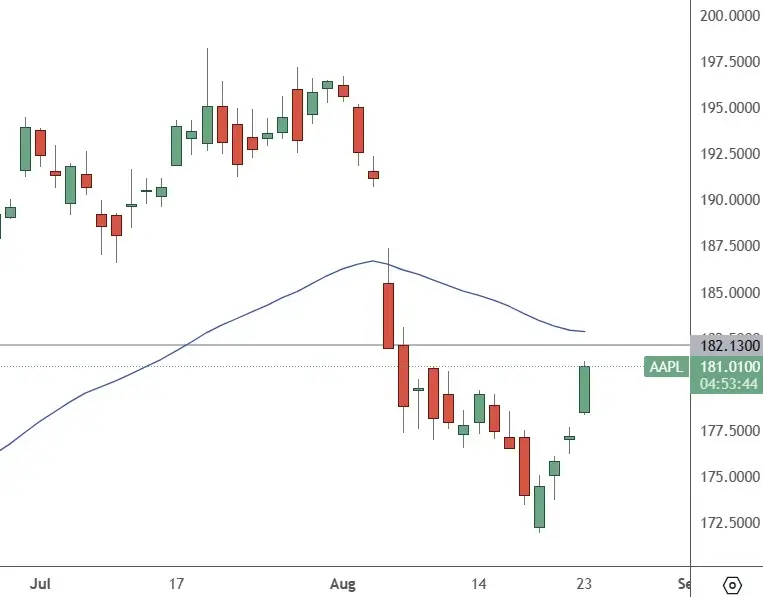Apple shares have been looking to recover from the downturn in early August, and the hype around the new iPhone launch could help.

Apple shares have risen to a 2021 high of $182.13, which will be an important level in the coming weeks.
The new iPhone 15 is about to be released, and there are rumors that its price will be higher than that of the iPhone 14. Apple’s iPhone 15 Pro in the US could cost between $1,099 and $1,199, while the iPhone 14 Pro costs $999. The iPhone 15 Pro Max could cost $1,199 or $1,299, while the current model has an asking price of $1,099.
Apple is likely to respond to the impact of slowing sales this year by reducing inflationary pressures.
It is said that the iPhone 15 will launch in September and may last longer. According to a new report published on August 21, these phones could charge up to 35W, which means that charging speeds could be up to 100% faster. The iPhone 14 Pro has a power cap of 27W, while the standard iPhone 14 has a power cap of 20W.
September 4 is Labor Day weekend, and there is speculation that an announcement will be made around September 14, with a new iPhone released a week later.
Morgan Stanley said Apple was the “least owned” big tech stock it tracked. Analysts led by Eric Woodling said:
“In our view, this reflects Apple’s significant weight in the market index, especially after the market outperformed the market by 30 points at the end of July. It also reflects investors’ concerns about the divergence between valuations and short-term fundamentals (F4Q guidance suggests revenue will decline year-over-year for the fourth consecutive quarter).”
In addition, they noted that while demand for Macs and iPads remains “challenging,” the company said growth in the September quarter may be in the “right place” with year-over-year iPhone growth and accelerated growth in the services business.
The analyst added:
“As a result, we expect Wall Street earnings per share to rise 5% in fiscal 2024 and expect the stock to outperform as growth accelerates, margins widen year over year, and consensus expectations move higher.”